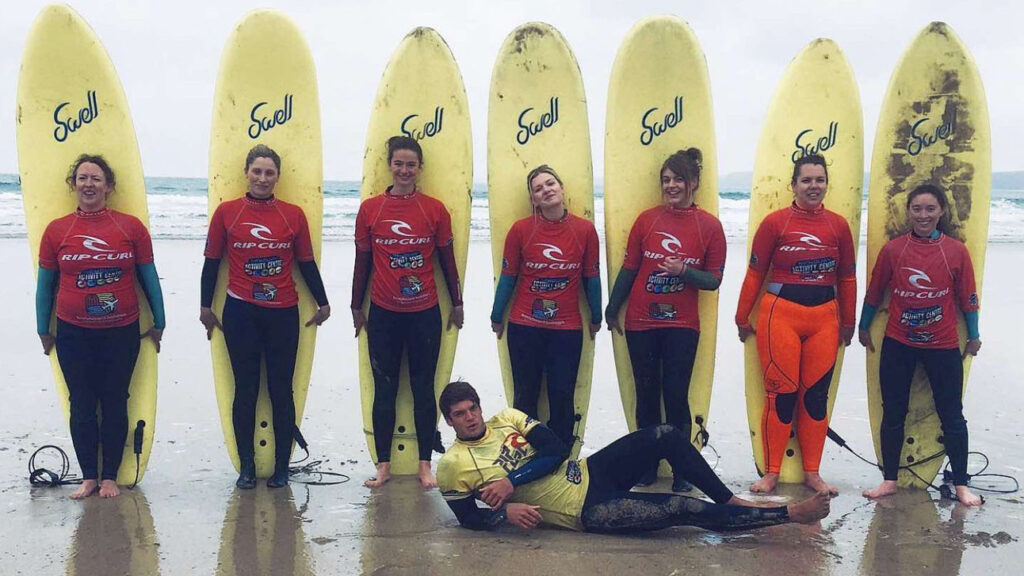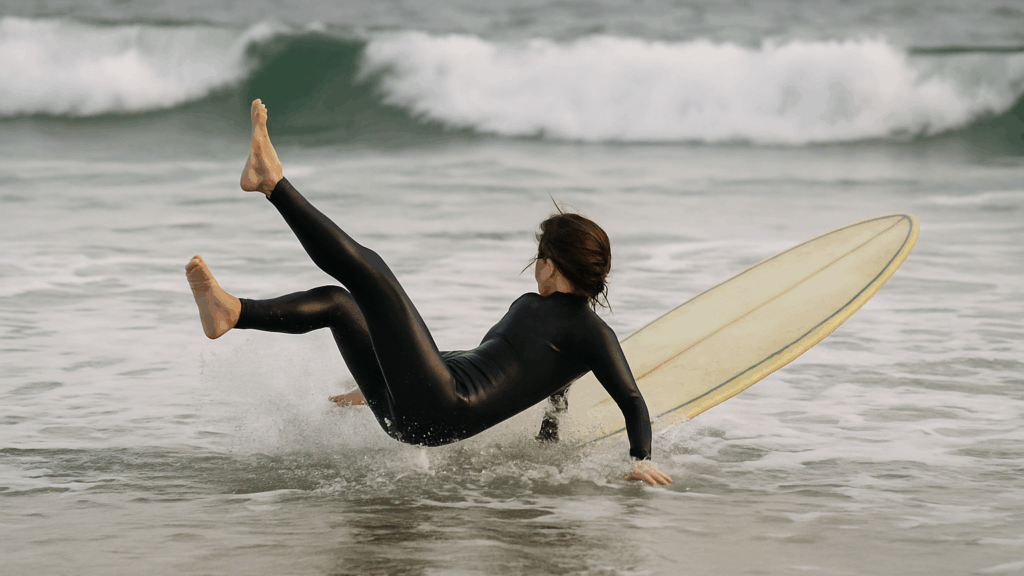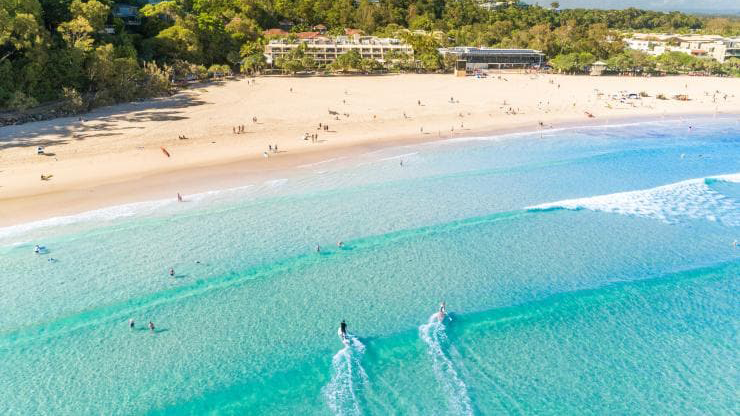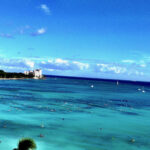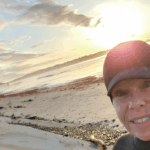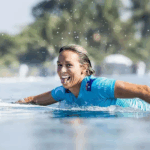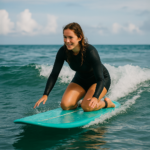Now Reading: Pop-up sucks? Blame your tools
-
01
Pop-up sucks? Blame your tools
Pop-up sucks? Blame your tools

Weekly pop-up is back! And today, we’re talking about the unsung saboteurs of your pop-up: your wetsuit and your board—and how they might be making things harder than they need to be.
For the past couple weeks, we’ve been talking about how your fitness (or lack thereof), your practice routine (or lack thereof), and even not looking where you’re supposed to look can be detrimental to your pop-up progression. It was all on: you, you, you.
But sometimes, it’s just the hand you were dealt. Or more precisely—the wetsuit and board you were dealt.
Is it easier to pop up when you’re surfing—as ancient Hawaiians intended—naked (well, bikini or boardshorts forward)? Hell yeah.
Don’t you pop up more often on a giant of a board that weighs almost as much as the ancient Hawaiian Olo? Naturally.
So go on. It’s OK to blame your tools.
When you start surfing, you don’t know what you don’t know.
🧥 Wetsuits
If you’re buying a wetsuit, you probably learn that it should be thick enough to keep you warm at your local surf break. It goes like this:
- In the tropics or anything above 70°F / 21°C – dealer’s choice: a spring suit, swimsuit, or bikini will do.
- Mild conditions (15–20°C / 59–68°F): 3/2mm is the sweet spot.
- Colder water (10–15°C / 50–59°F): Go for 4/3mm or even 5/4mm.
- Surfing the UK in winter or interested in arctic surfing? Get a steamer, booties, gloves, and a hood.
This part, you probably know.
But did anyone tell you to do a few squats and pretend paddles in the dressing room?
Yes, your suit will feel stretchier in the water, but you still need to be able to move—and breathe.
Conversely, make sure your suit isn’t too big, as it’ll retain pockets of water and weigh you down.
Don’t be afraid to try different brands, different zipper types (front or back), and different sizes. There’s literally no rhyme or reason to this wetsuit fitting madness.
I have a 4/3 O’Neill Epic that feels more flexible and pleasant to pop up in than my 3/2—you guessed it—O’Neill Epic.
The rule of thumb: if you don’t feel comfortable in a wetsuit on land, it’s unlikely you’ll feel comfortable in it in the water. You don’t want to fight your suit during a pop-up.
And lest we forget—most wetsuits are made for the “average-sized” person. So if nothing fits right, you’re not broken. The sizing system is. If your budget allows, you can go custom.
Also: an ill-fitting bikini may not be your friend in explosive pop-up progression—especially if you have to adjust it every time to keep your privates covered. Oh, the stress.
🏄 Surfboards
And here’s something you never hear:
“Oh, it’s so much easier for me to pop up now that I bought my own surfboard than when I was learning at a surf school or retreat.”
Buying your first board is a topic for another episode—but for now, here’s what makes popping up easier:
- Longer boards are better than shorter boards for learning to pop up. 9’6″ to 8′ gives you more surface area, more time to stand, and a gentler learning curve.
- Volume matters—especially if, like me, you’re on the curvier side. More volume = more buoyancy and float = more stability + easier paddling.
Look for 60–80 liters, but know the trade-off: more volume = harder to turn. - Width helps too. Think 22–24 inches. More width = more side-to-side stability + more room for your feet.
- Rocker (nose-to-tail curve)is also a factor The flatter the better. Flat = more stable = easier to pop up.
- Soft tops are beginner-friendly: softer landings, more forgiving on knees, shins, and heads.
Me? I’ll take my hard-top fiberglass longboard over an 8’ foamie any day—unless it’s big and I’d rather not get smacked in the head.
So if your pop-up is giving you grief, maybe—just maybe—it’s not you.
Maybe it’s your gear.
Go ahead—blame your tools. Just make sure you upgrade them eventually. 😉













